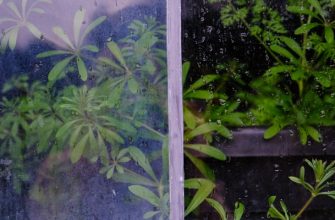- Exploring the Latest Breakthroughs in Air Purification
- From HEPA to Plasma: The Evolution of Air Cleaning Technologies
- Smart Air Purifiers: Integrating IoT for Enhanced Indoor Air Quality
- The Role of Nanotechnology in Next-Gen Air Filters
- Sustainability Meets Innovation: Eco-Friendly Air Purification Solutions
- Comparing Traditional vs. Modern Air Purification Methods
Exploring the Latest Breakthroughs in Air Purification
In recent years, the air purification market has witnessed significant advancements, driven by technological innovations aimed at enhancing indoor air quality. Innovative air purification technologies are now more efficient, user-friendly, and environmentally friendly, addressing a variety of contaminants, including allergens, VOCs, and harmful microorganisms.
One of the most notable breakthroughs is the introduction of HEPA filters combined with UV-C light technology. This dual-action system not only captures airborne particles but also disinfects them, offering a comprehensive solution for cleaner air. These systems are particularly effective in homes where respiratory health is a concern.
Another exciting development is the rise of smart air purifiers. These devices utilize advanced sensors to monitor air quality in real-time and adjust purification levels accordingly. Users can control these units via smartphone apps, making it easier to maintain optimal air conditions without manual adjustments.
- Nanotechnology: This emerging field has led to the creation of filters that can capture even the smallest particles, enhancing purification efficiency.
- Activated Carbon: New formulations of activated carbon filters are being developed, which are more effective at trapping odors and harmful gases.
- Photocatalytic Oxidation: This method uses light to activate a catalyst that breaks down pollutants at a molecular level, providing a powerful means of air purification.
Furthermore, the integration of IoT (Internet of Things) capabilities into air purification systems allows for seamless connectivity and data sharing. This interactivity enables users to receive notifications about filter changes or air quality alerts, ensuring a proactive approach to maintaining a healthy living environment.
As consumer demand for cleaner air continues to grow, manufacturers are investing heavily in research and development of these innovative air purification technologies. The future of air purification appears bright, with ongoing innovations promising to deliver even more effective solutions for creating healthier indoor spaces.
From HEPA to Plasma: The Evolution of Air Cleaning Technologies
The journey of air cleaning technologies has been marked by remarkable advancements, transitioning from traditional methods like HEPA filters to cutting-edge solutions such as plasma purification systems. Each new innovation in air purification aims to enhance indoor air quality, ensuring a healthier living environment for users.
HEPA (High-Efficiency Particulate Air) filters have long been a standard in air cleaning, effectively capturing 99.97% of particles as small as 0.3 microns. These filters are renowned for their efficiency in removing allergens, dust, and other pollutants from the air. However, they have limitations, particularly in terms of air circulation and the need for replacement filters.
As technology evolved, new air purification solutions emerged, addressing the shortcomings of HEPA systems. One notable advancement is the introduction of activated carbon filters, which excel in removing odors and volatile organic compounds (VOCs). This combination of HEPA and activated carbon filtration provides a more comprehensive approach to air cleaning.
Recently, the market has witnessed the rise of plasma air purifiers. These innovative devices utilize ionization technology to neutralize airborne pathogens, allergens, and particulate matter. Plasma purification not only captures contaminants but also breaks them down, offering a more thorough cleaning process compared to traditional methods.
- HEPA Filters: Reliable for particulate matter removal.
- Activated Carbon Filters: Effective in eliminating odors and VOCs.
- Plasma Purification: Advanced technology for pathogen neutralization.
In conclusion, the evolution of air cleaning technologies reflects a continuous effort to improve indoor air quality. From the reliable HEPA systems that laid the groundwork to the innovative plasma purification methods that are shaping the future, each advancement contributes to creating healthier indoor environments. Understanding these technologies helps consumers make informed choices about the best air purification solutions available on the market today.
Smart Air Purifiers: Integrating IoT for Enhanced Indoor Air Quality
Smart air purifiers are revolutionizing the way indoor air quality is maintained. These advanced devices leverage the Internet of Things (IoT) technology to offer enhanced purification capabilities. By connecting to smart home systems, these air purifiers can monitor air quality in real-time and adjust their operation accordingly.
One of the significant advantages of smart air purifiers is their ability to provide data-driven insights. Users can receive notifications about air quality levels through mobile apps, allowing for timely responses to pollution spikes. This connectivity not only improves user experience but also optimizes energy consumption by adjusting filtration power based on environmental conditions.
- Real-Time Monitoring: Continuous assessment of indoor air quality.
- Automated Adjustments: Self-regulating purification based on detected pollutants.
- Remote Control: Operation management via smartphone applications.
- Data Analytics: Insights into air quality patterns for better health management.
Additionally, many smart air purifiers incorporate advanced filtration technologies, such as HEPA filters and activated carbon layers, which work synergistically with IoT capabilities. This combination ensures that allergens, dust, and harmful gases are effectively removed from indoor spaces.
In the realm of innovation, some models even integrate voice control, making them compatible with popular smart home assistants. This feature enhances convenience, allowing users to adjust settings without physical interaction, which is particularly beneficial for individuals with mobility challenges.
As the market for smart air purifiers continues to expand, consumers are increasingly prioritizing devices that not only clean the air but also provide valuable insights into their living environment. With enhanced connectivity and sophisticated filtration methods, smart air purifiers are setting new standards for indoor air quality management.
The Role of Nanotechnology in Next-Gen Air Filters
Nanotechnology plays a pivotal role in the development of next-generation air filters, revolutionizing air purification systems. By manipulating materials at the molecular level, nanotechnology enhances the effectiveness and efficiency of air filtration processes. These advanced filters utilize nanomaterials, such as carbon nanotubes and nanosilver, which possess unique properties that significantly improve air quality.
- Enhanced Filtration: Nanotechnology allows for the creation of filters with extremely small pores, capable of trapping pollutants, allergens, and pathogens that traditional filters may miss.
- Antimicrobial Properties: Incorporating nanosilver into air filters provides antimicrobial effects, reducing the presence of harmful bacteria and viruses in the air.
- Increased Surface Area: Nanomaterials have a high surface area-to-volume ratio, enabling better adsorption of airborne particles and gases, thereby improving overall air purification.
- Energy Efficiency: Next-gen air filters engineered with nanotechnology often require less energy to operate, reducing overall energy consumption in air purification systems.
- Longer Lifespan: The durability of nanofilters is enhanced, leading to longer replacement intervals and lower maintenance costs for consumers.
As air quality continues to decline in urban environments, the integration of nanotechnology in air filters represents a significant advancement in air purification technology. These innovative air filters not only provide superior filtration but also align with sustainable practices by being more energy-efficient and longer-lasting.
Research and development in this field are ongoing, with new nanomaterials and techniques being explored to further enhance air purification capabilities. The future of air filtration is undoubtedly tied to the advancements in nanotechnology, promising cleaner air and healthier living environments.
Sustainability Meets Innovation: Eco-Friendly Air Purification Solutions
As the demand for clean air solutions continues to rise, innovative air purification technologies are at the forefront of addressing environmental concerns. Eco-friendly air purification solutions are designed not only to improve indoor air quality but also to promote sustainability. These cutting-edge systems utilize advanced materials and processes that minimize environmental impact while effectively removing pollutants.
- Biodegradable Filters: Recent advancements have led to the development of filters made from biodegradable materials. These filters can efficiently capture airborne particles while ensuring that waste is reduced at the end of their life cycle.
- Energy-Efficient Designs: Modern air purifiers are engineered to consume less energy, thus lowering the carbon footprint associated with their operation. Energy Star-rated models exemplify this trend, providing effective air cleaning without excessive power use.
- Natural Purification Processes: Innovative air purification technologies now include systems that leverage natural processes, such as photocatalytic oxidation and plant-based purification, to enhance air quality without relying on harsh chemicals.
- Smart Technology Integration: Many eco-friendly air purifiers are equipped with smart technology that allows users to monitor air quality in real-time. This feature not only promotes awareness but also encourages proactive measures to maintain a healthy indoor environment.
The integration of sustainability into air purification systems reflects a growing recognition of the interconnectedness of health and environmental stewardship. By embracing innovative air purification technologies that prioritize eco-friendliness, consumers can contribute to a cleaner planet while ensuring their indoor spaces remain safe and healthy.
Comparing Traditional vs. Modern Air Purification Methods
In recent years, the increasing awareness of air quality has brought traditional and modern air purification methods into sharp focus. Understanding the differences between these approaches is essential for making informed decisions about air purification technologies. Traditional methods, such as HEPA filters and activated carbon systems, have long been trusted for their effectiveness in removing pollutants and allergens from indoor environments.
On the other hand, modern air purification technologies have introduced innovative solutions that enhance air quality further. These methods include ionization, UV-C light, and advanced filtration systems that utilize nanotechnology. While traditional methods primarily rely on physical filtration, modern systems often incorporate chemical and biological processes to target a broader range of contaminants.
- Traditional Air Purification:
- HEPA filters: Highly efficient at trapping particulate matter.
- Activated carbon: Effective for odor and chemical absorption.
- Mechanical filters: Simple and easy to maintain.
- Modern Air Purification:
- Ionization: Reduces airborne particles by charging them.
- UV-C light: Destroys bacteria and viruses effectively.
- Nano-filtration: Targets smaller particles and allergens.
When comparing effectiveness, traditional systems excel at capturing larger particles, while modern technologies offer superior performance in eliminating microscopic pollutants. This distinction is crucial for those seeking comprehensive air purification solutions. Additionally, the maintenance requirements differ significantly; traditional filters require regular replacement, whereas some modern systems may offer longer lifespans with minimal upkeep.
In terms of energy consumption, modern air purifiers often employ energy-efficient designs that can reduce electricity costs. Traditional systems, while reliable, may consume more power, especially if they require constant operation. Overall, the choice between traditional and modern air purification methods depends on individual needs and preferences, making it essential to evaluate both to achieve optimal indoor air quality.








